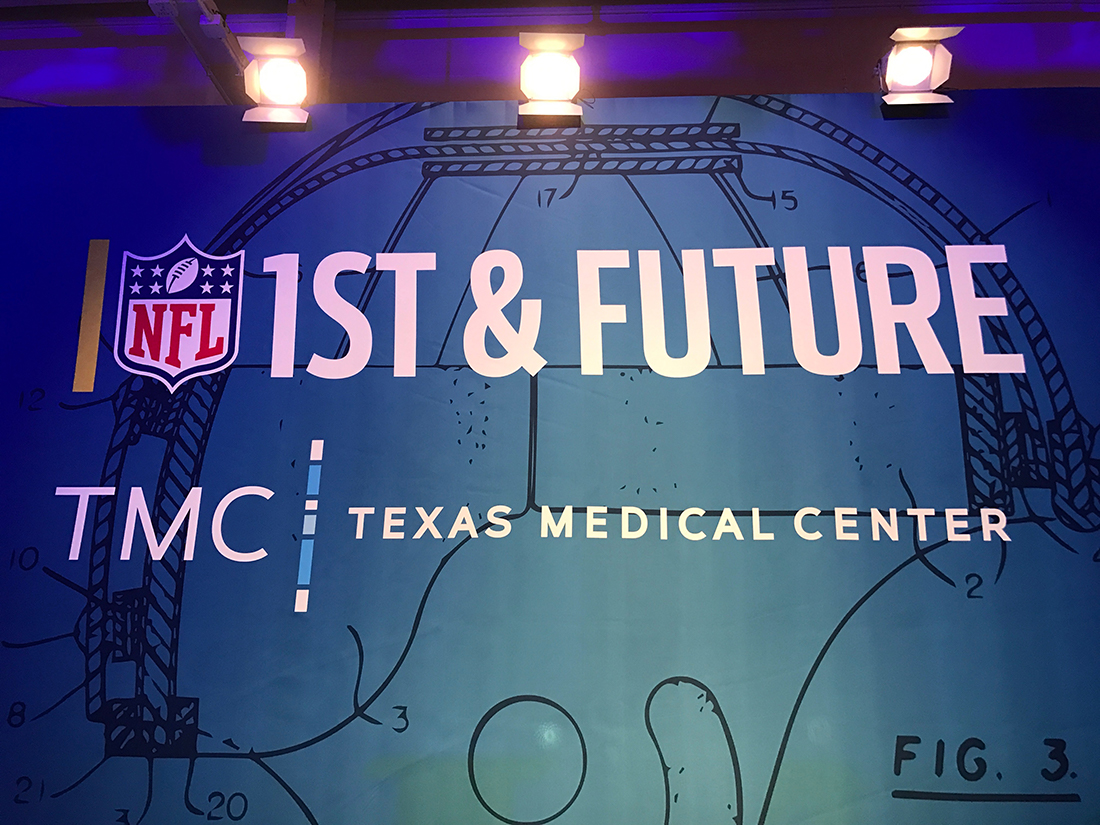By Allie Burger
Reporting from Houston
The Super Bowl has come and gone. Fans have left Houston and Twitter has trended toward in-season sports. But for players, the physical effects of that game along with the cumulative contact leading up to it, will continue to be felt by the Patriots and Falcons who took over NRG Stadium that day.
Shawn Springs is determined to change that.

A day before Super Bowl LI, Springs, a 13-year NFL veteran cornerback, celebrated a victory of his own. His company, Windpact, won the Materials To Protect The Athlete award at the NFL’s 1st and Future event for his padding system in helmets and protective gear.
“I just want to make the game safer,” said Springs, who was also awarded $50,000 by the NFL and Texas Medical Center, the competition sponsors. “My father was a professional football player. … I played 13 years and my sons just signed national letters of intent to play and follow in our footsteps. That’s my passion behind wanting to create a great solution to be able to give back to the game.”
Springs, 41, said his idea for the padding technology was inspired by car seats he had for his three children.
“I saw the technology used by a company called Safety 1st,” Springs said. “I went to work with those guys and said, ‘Here’s an opportunity for me to repurpose this technology.’”
Springs spent two years learning about impact protection before he began to develop his product. Slowly, he said, he built up a team around him and a prototype.
Springs tested the helmet at Virginia Tech but was warned by one of the professors that more than 96 percent of products tried out there did not end up being successful.
Springs was not one of the many flops.
“The data has been great, the improvements have been great and now we’re taking the next step in football specifically to get it into a helmet,” chief operating officer Max Moyer said.
The competition panel, including medical and technology experts and former and current NFL players, said they see great potential in Windpact.
“What I was looking for were two things,” said competition judge and former astronaut Mae Jemison, “whether or not there was applicability to other areas, and how likely was it to make a change in the future that was very effective. I think that’s what set them apart.”
Though Windpact is still in an initial implementation phase, Moyer said the company has big plans in the next year.
“Right now, we’re sort of taking that turn from [research and development] to product development and plan acquisition,” Moyer said. “We’ve got our first helmet on the market. It has our technology in it and we’re working with some really exciting larger brands to put it out there.”
As their product’s implementation into the sports equipment market increases, Springs said he hopes concussion rates will lessen.
The ultimate goal is “to be synonymous with head protection,” Springs said. “When you flip over a helmet, that’s our impact technology.”

